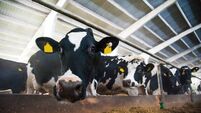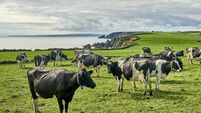Feed the hungry... and save the planet
Chief executive of Concern Tom Arnold said hundreds of millions had escaped poverty and hunger, even when the world population was growing from three billion to six billion, in the past 30 years. A combination of globalisation, economic growth and new agricultural technologies enabled rising living standards.
The proportion of the world’s population classified as hungry had halved. But this trend still left the “bottom billion” living in poverty, with 850 million classified as hungry, a figure which had increased by another 100m in 2008 because of the sharp rise in food prices in 2007 and the first half of 2008, according to the Food and Agriculture Organisation of the UN.
These price spikes were attributed to production shortfalls because of drought, low stocks, high energy prices, growing food demand, policies on biofuels, and speculation.
During the period of relative success, agricultural prices had been falling. But several factors pointed to volatility in food prices in the future, including the increasing frequency of emergencies related to drought and flooding, interpreted as evidence of global warming and climate change.
Slowing agricultural productivity was another factor. Productivity growth had declined to about 1% per annum, falling below the rate of population growth. This trend can be traced to declining investment in research, loss of quality agricultural land to urbanisation, and degradation of land. Bad government in some countries was also a factor.
There was some scope for increasing the amount of land in food production, particularly in eastern Europe and some parts of Africa. But action was needed if the agricultural sector is to feed the world’s hungry — action on maintaining food security, international co-operation (like what happened in response to the 2008 food price crisis), increased investment in public agricultural research, and increased aid to smallholder agriculture in developing countries.
Ireland had the opportunity to play a leading role in some of these areas. Concern’s initiative in treating chronically ill people in the community rather than in hospital had been adopted as best practice in international nutrition policy. Kerry Foods, Concern and the Washington-based policy analysis group, IFPRI (International Food Policy Research Institute) were developing solutions to hunger and malnutrition, in a joint programme of research in South Africa.
nAdaptation to climate change is the single greatest change facing agriculture, said UCD’s Professor of Environmental Policy, Frank Convery, at last week’s meeting in Dublin of agricultural economists from Ireland and Britain.
But climate change brings opportunities alongside the challenges, he told the conference organised by the Agricultural Economics Society of Ireland.
Use of the atmosphere to dispose of greenhouse gasses cannot continue as before, said Prof Convery.
He said Ireland and New Zealand have the greatest vested interest in finding ways and means of reducing methane production from cattle. We could export any successful new technologies developed in this area. More commercial and intensive production was favoured by the finding that more efficient production of milk (from fewer cows) or beef (earlier slaughter) would lead to lesser greenhouse gas emissions.












